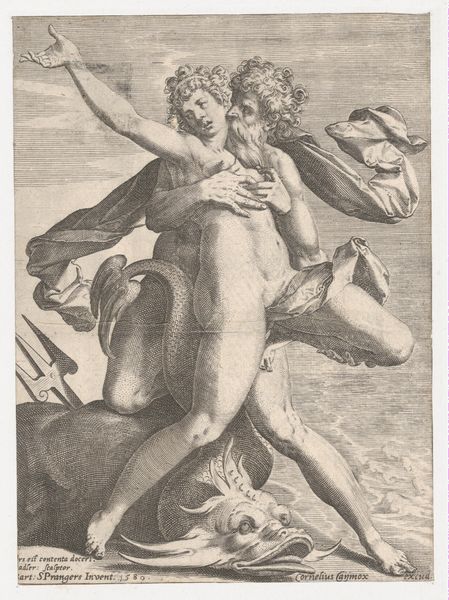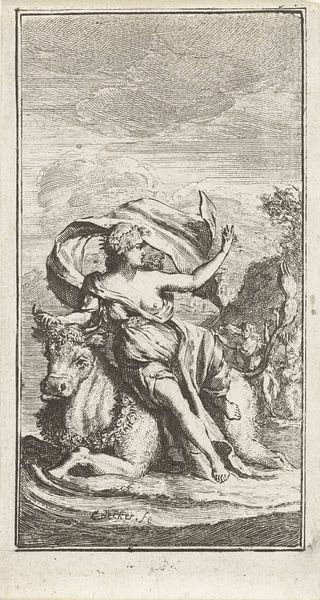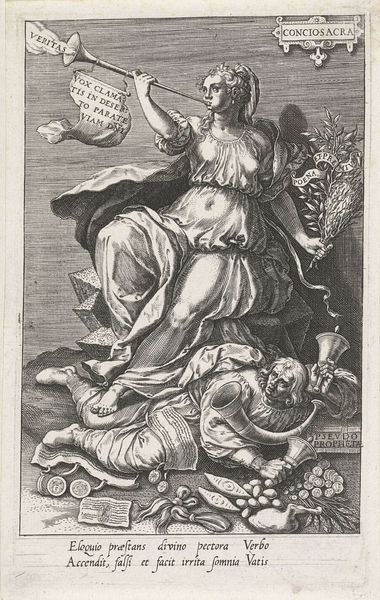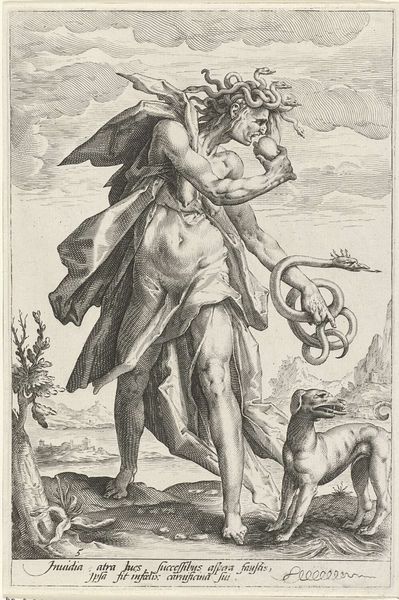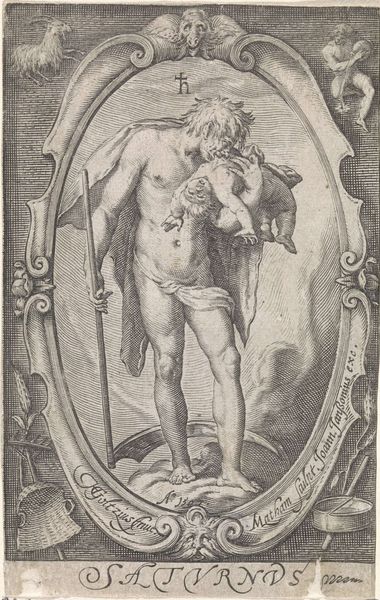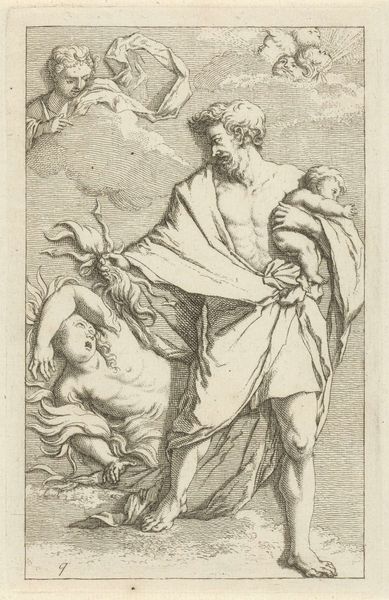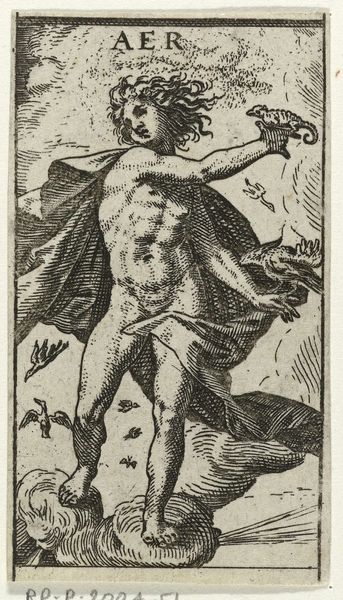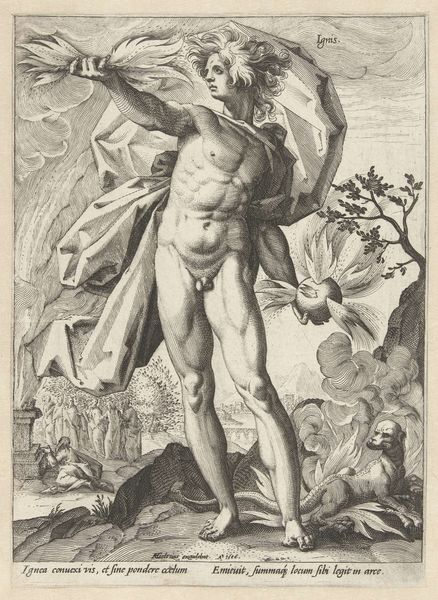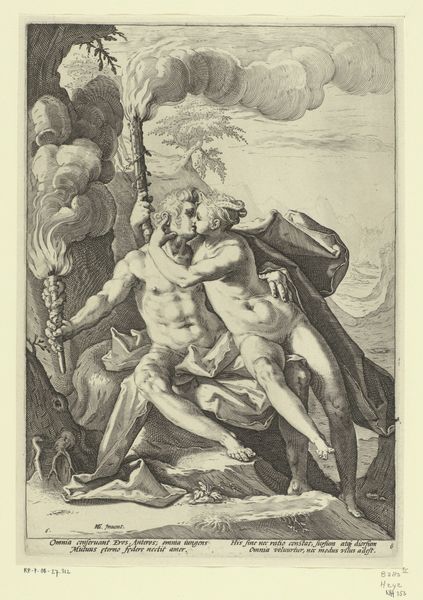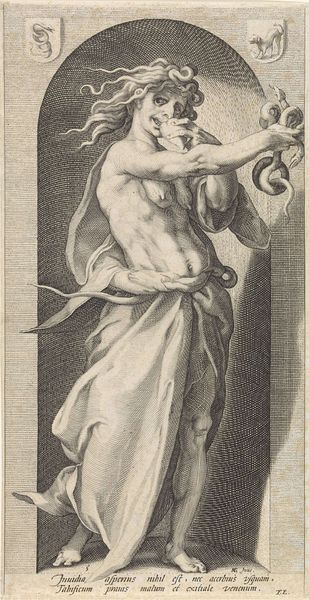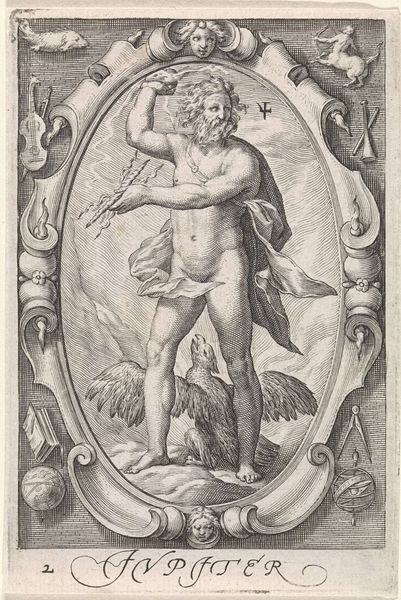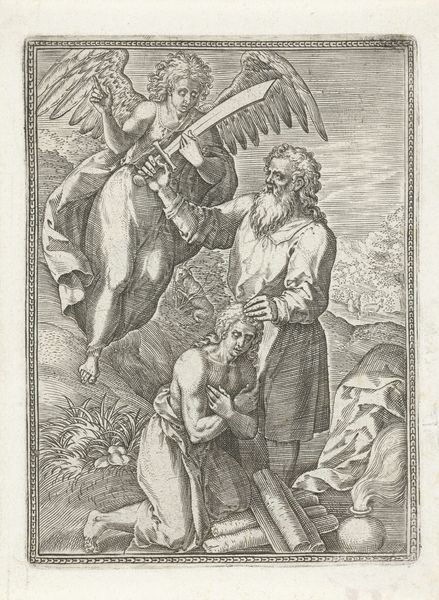
print, etching, engraving
#
baroque
# print
#
etching
#
old engraving style
#
figuration
#
line
#
history-painting
#
nude
#
engraving
Dimensions: height 141 mm, width 90 mm
Copyright: Rijks Museum: Open Domain
Curator: Johann Sadeler I’s "Neptunus Verrast Caenis," created before 1628, is a striking example of Baroque printmaking currently housed at the Rijksmuseum. It's rendered using etching and engraving techniques. Editor: The tonal range achieved purely through line work is really beautiful, especially given the sensuous figures depicted. It evokes a mood of charged intimacy—almost claustrophobic in its close-up framing of the two bodies. Curator: The dynamism achieved with line is certainly masterful here, a key element to how we perceive depth and movement in the composition. Observe the careful orchestration of lines: darker, densely packed marks suggesting shadows and volume, contrasted with sparse, light strokes that capture the reflective surface quality of skin. It adheres to many conventional formulas regarding figure studies within baroque ideology. Editor: Beyond the formal elements, the iconography is loaded. Neptune’s grasp, Caenis’ raised hand. The sea monster they both seem to be balancing on… the tension lies in whether she's consenting. The original myth has complex readings surrounding power, desire, and gender transformation. The etching captures that precarious balance. Curator: I think you're spot on to connect this to power dynamics. We can break down how Sadeler communicates dominance visually through gestural vectors: Neptune's strong grasp, his positioning slightly above Caenis, his gaze locked onto her. The very visual hierarchy underlines prevailing societal power structures during that period. Editor: Absolutely. The symbols aren't mere decoration; they're embedded in a system of representation. Even Neptune’s trident is purposefully placed partially obscured – its power latent, underlying the unfolding scene. I’m drawn to the lower portion – Caenis on what looks like a sort of sea dragon... it’s disturbing somehow. Curator: Seeing beyond immediate themes, the placement and interaction of shapes create an echo chamber of forms. Every contour leads the eye from one figure to the next and across the composition, creating both movement and stability in its design and use of conventional subject. Editor: A study of the male gaze then? An allegory for social hierarchies? What appeared merely beautiful reveals its own visual and cultural grammar to challenge as much as admire it.
Comments
No comments
Be the first to comment and join the conversation on the ultimate creative platform.
